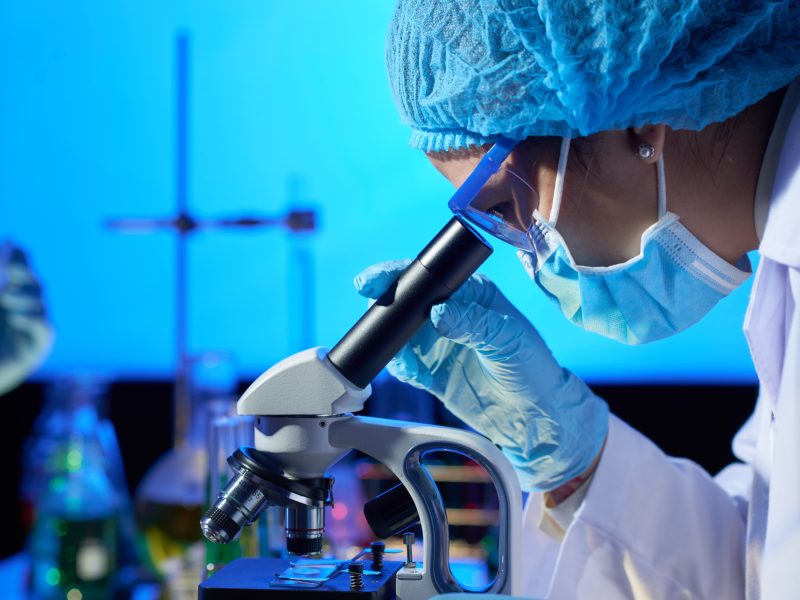Acne is a common skin condition that affects millions of people worldwide. While most people associate acne with adolescence, the truth is that it can occur at any age. Acne can be caused by a variety of factors, including genetics, diet, and environmental factors. However, one of the most significant factors contributing to acne development is hormones. Hormonal changes can lead to an increase in sebum production, which can clog pores and lead to the formation of acne.
Understanding the role of hormones in the development of acne is essential for effective treatment and management. In this blog post, we’ll explore the science behind acne development and how hormones play a key role in this process. We’ll also discuss the different hormonal changes that can contribute to the development of acne, and the importance of seeking medical advice in the management of this condition.
The Science of Acne Development
Acne develops when hair follicles become clogged with oil and dead skin cells. The hair follicles connect to sebaceous glands that produce sebum, which is an oily substance that helps keep the skin moisturised. When the sebaceous glands produce too much sebum, the excess oil can mix with dead skin cells and bacteria, clogging the hair follicle and forming a plug.
The plug can then become inflamed and infected, leading to the formation of pimples, blackheads, and whiteheads. Propionibacterium acnes, a bacteria that naturally resides on the skin, can contribute to the inflammation and infection of clogged hair follicles.
The development of acne is a complex process that involves multiple factors, including hormones, genetics, diet, and environmental factors. Hormonal changes, in particular, can have a significant impact on sebum production and the development of acne. This is why hormonal management is an essential aspect of acne treatment.
In addition to hormonal changes, environmental factors such as pollution, humidity, and sweating can also contribute to the development of acne. Proper skin care, including gentle cleansing and exfoliation, can help reduce the build-up of oil and dead skin cells on the skin’s surface, reducing the likelihood of clogged hair follicles and acne.
Hormones and Acne Development
Hormones play a crucial role in the development of acne. During puberty, the body undergoes significant hormonal changes, which can lead to an increase in sebum production. Androgens, a group of hormones that includes testosterone, are particularly important in this process. Androgens stimulate the sebaceous glands to produce more sebum, which can lead to the formation of acne.
Hormonal imbalances can also contribute to the development of acne. For example, conditions such as polycystic ovary syndrome (PCOS) and congenital adrenal hyperplasia (CAH) can cause an overproduction of androgens, leading to acne and other symptoms.
Hormonal changes during the menstrual cycle can also contribute to acne development. The increase in androgens during the luteal phase of the menstrual cycle can lead to an increase in sebum production and the development of acne.
Pregnancy can also cause hormonal changes that can contribute to the development of acne. The increase in progesterone during pregnancy can lead to an increase in sebum production, while the decrease in oestrogen after childbirth can lead to acne flare-ups.
Finally, hormonal changes during menopause can also contribute to acne development. The decrease in oestrogen during menopause can lead to a decrease in collagen production, making the skin more prone to acne and other signs of aging.
Managing hormonal imbalances through medication, such as birth control pills and anti-androgen medications, can help reduce sebum production and the development of acne. It is essential to seek medical advice to determine the underlying hormonal factors contributing to the development of acne and the most appropriate course of treatment.
The Role of Androgens in Acne Development
Androgens, a group of hormones that includes testosterone, play a significant role in the development of acne. They are present in both males and females, but males produce them in higher amounts. Androgens stimulate the sebaceous glands to produce more sebum, the oily substance that can clog hair follicles and lead to acne formation.
The sebaceous glands have receptors for androgens, meaning that androgens can directly stimulate the production of sebum. Studies have shown that individuals with acne have higher levels of androgens in their blood than those without acne. Androgens can also cause the skin cells to stick together, further contributing to the formation of clogged hair follicles.
The correlation between androgens and acne severity has been demonstrated in studies that have measured androgen levels in individuals with acne. Individuals with more severe acne tend to have higher levels of androgens in their blood.
Anti-androgen treatments are sometimes used in the management of acne. These medications work by blocking the effects of androgens on the sebaceous glands, reducing sebum production and acne formation. Birth control pills containing oestrogen and progesterone are often used as an anti-androgen treatment for women with acne, while medications such as spironolactone are used in both men and women.
In conclusion, androgens play a critical role in acne development by stimulating sebum production and contributing to the formation of clogged hair follicles. Hormonal management, including anti-androgen treatments, can be effective in managing acne and reducing the severity of symptoms.
Other Hormones Involved
While androgens are the most significant hormones involved in acne development, other hormones can also contribute to this condition. These hormones include:
- Insulin-like Growth Factor 1 (IGF-1): IGF-1 is a hormone that plays a crucial role in cell growth and development. Studies have shown that IGF-1 can stimulate sebum production and contribute to acne development.
- Cortisol: Cortisol is a hormone that is released in response to stress. High levels of cortisol can cause an increase in sebum production, leading to acne formation.
- Oestrogen: Oestrogen is a female hormone that plays a role in the menstrual cycle and pregnancy. While oestrogen can have a protective effect on the skin, its decrease during menopause can lead to a decrease in collagen production, making the skin more prone to acne formation.
- Progesterone: Progesterone is a hormone that is released during the menstrual cycle and pregnancy. High levels of progesterone can cause an increase in sebum production, leading to acne formation.
Managing these hormonal imbalances through medication or lifestyle changes can help reduce sebum production and acne formation. For example, reducing stress levels through exercise or meditation can help reduce cortisol levels and reduce acne formation. Additionally, eating a balanced diet and avoiding foods that increase insulin levels, such as sugary and processed foods, can help reduce the production of IGF-1 and reduce acne formation.
Wrapping It All Up
In conclusion, hormones play a significant role in the development of acne. Androgens, in particular, stimulate sebum production and contribute to the formation of clogged hair follicles, leading to acne formation. Hormonal imbalances, such as those caused by conditions like PCOS and CAH or changes during the menstrual cycle, pregnancy, and menopause, can also contribute to acne development.
Understanding the hormonal factors involved in acne development is essential for effective treatment and management of this condition. Medications such as anti-androgens and birth control pills can help manage hormonal imbalances and reduce acne formation. Lifestyle changes such as reducing stress levels, eating a balanced diet, and avoiding certain foods can also help reduce hormonal imbalances and acne formation.
Consulting with a healthcare professional can help determine the underlying hormonal factors contributing to acne development and the most appropriate course of treatment. By managing hormonal imbalances, we can improve the overall health of our skin and reduce the frequency and severity of acne outbreaks.
Read More
- The Importance of Eyelashes and Eyebrows
- Causes, Prevention, and Treatment of the 6 Different Types of Acne
- 7 Reasons Why Loving Your Job is Important
- A Guide to Understanding the Causes of Obesity
- How to Choose the Right Acne Treatment for Your Skin Type
Disclaimer: The information provided on Healthy Lifestyles for All is intended for general educational purposes only and should not be considered as medical advice. Please consult with your GP or other health professional before making any significant changes to your diet, exercise routine, or any other aspect of your lifestyle. We are not responsible for any adverse effects or consequences resulting from the use of the information provided on our blog.
Comments: I hope you enjoyed reading this post as much as I enjoyed writing it. If you liked it, please leave a comment. If you didn’t like it, disagree with something I have written (I’m okay with that), or think I got something wrong (that’s okay too), please leave a comment as well. We only truly learn from our mistakes, so I am happy to have mine pointed out.
Affiliate Links: Please also note that I may make a small amount of money if you buy one of the products I recommend in any of my blog posts. Rest assured that I have done my own due diligence, and only recommend products that have been tried and tested, and have extremely good feedback. Additionally, many of the products I recommend have 30 or 60-day money-back guarantees, so you can buy in the confidence that if a particular product is not right for you, you can get a refund.


